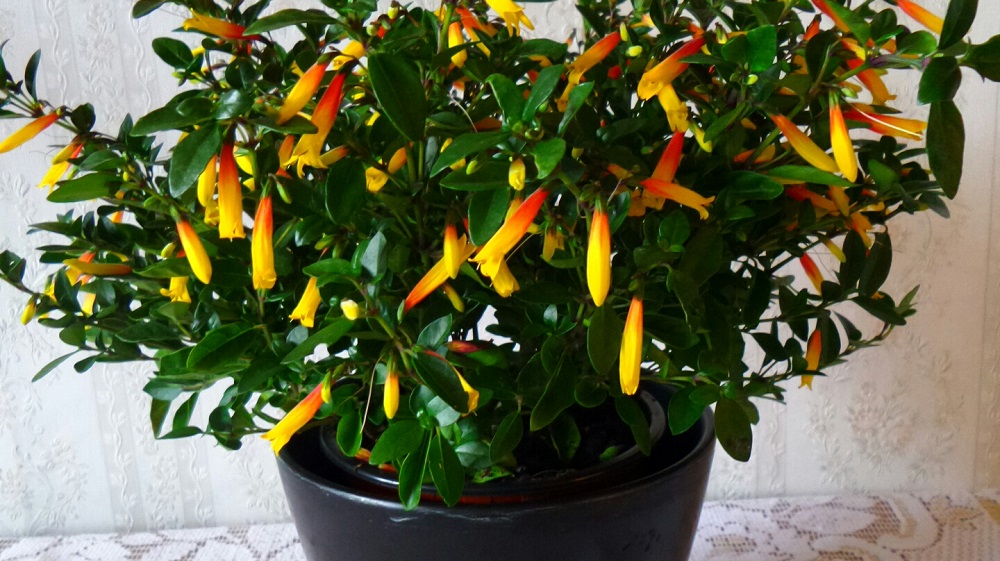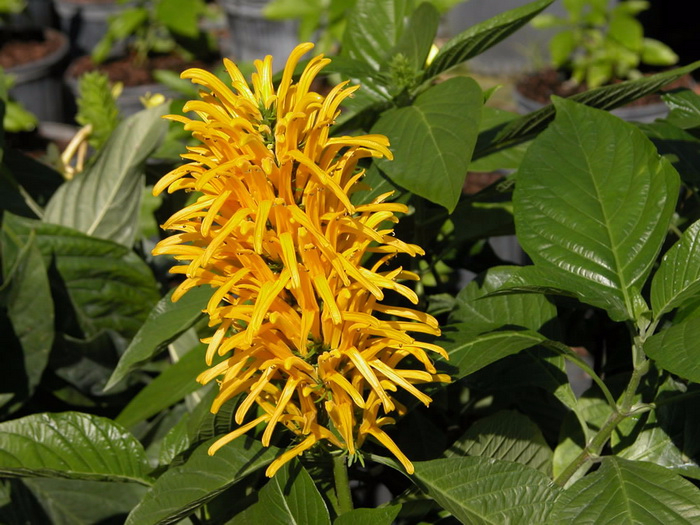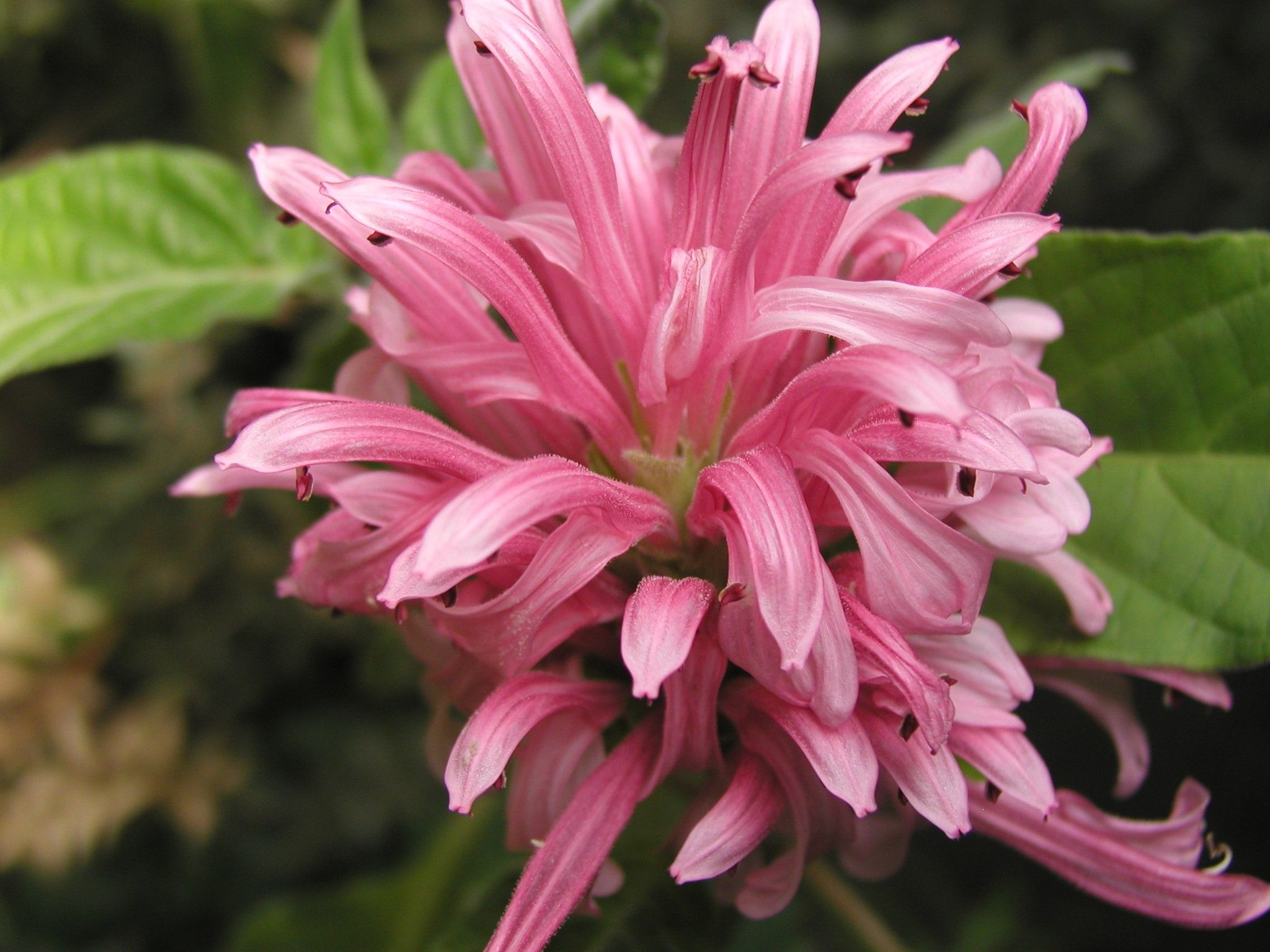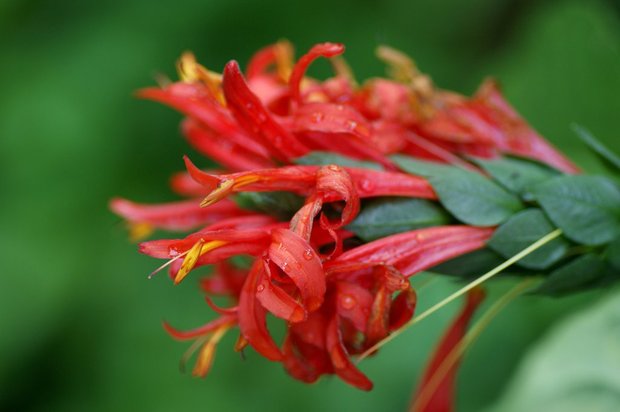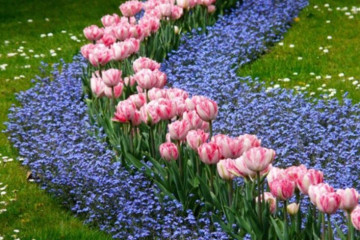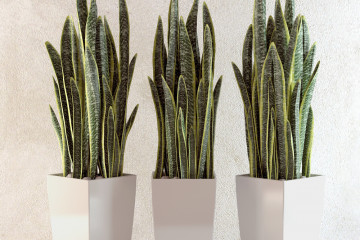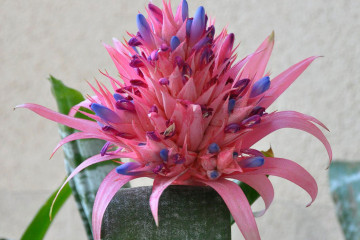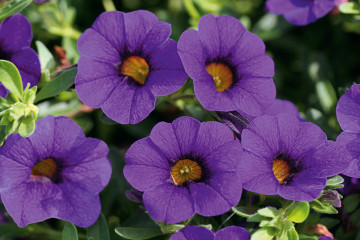Jacobinia flower - description of the plant, reproduction and care
Content:
Jacobinia is a flower that looks beautiful at any time of the year. This is due to the fact that the plant has showy evergreen leaves. Due to its decorative appearance, Jacobinia is often grown as an indoor flower.
Botanical description
Jacobinia is an evergreen shrub. She belongs to the Acanthus family. The plant is native to the tropics of South and Central America.
The leaves are large and most often wrinkled. Flowers form lush inflorescences and can have different shades. The buds are two oblong tubular petals of an elongated shape.
Types and popular varieties
In total, there are about 40 varieties of plants, but there are very few indoor ones among them. The most unpretentious varieties are the most widespread.
- Jacobinia small-flowered
Dwarf shrub with tubular flowers. They have a red-orange and pink tint.
The plant is also known as Jacobinia Anita.
- Jacobinia yellow
Resident of Mexico and Central America. It has straight, tubular flowers of a bright yellow hue.
- Jacobinia pink
The flower has a large apical inflorescence. The bush grows up to 1.5 meters. The leaves are long, dark green with a shiny surface.
- Jacobinia Brandege
Branched plant with spike-shaped inflorescences. They consist of tubular flowers of a snow-white shade, which are surrounded by pink bracts.
- Jacobinia meat-red
A small branching plant with long pubescent leaves. Round inflorescences are formed from bright pink flowers.
- Jacobinia vascular
Ornamental shrub with bright green leaf plates. The flowers have white petals with red veins that resemble blood vessels.
Jacobinia - home care
When planting a house, a representative of the rainforest needs the right move. Otherwise, it will grow slowly and bloom poorly.
Temperature and lighting
An indoor bush needs bright, diffused light. It is better to put it on a windowsill facing the west or east side of the house.
- In spring and summer, the temperature in the room should be around +20 ° C.
- In winter, it can be reduced to + 17 ° C.
Watering and humidity
The humidity in the room must be at least 60%. To do this, the plant must be regularly sprayed, and it is advisable to put a tray with water next to the pot.
Water the inhabitant of the tropics only when the top layer of the earth dries out. In winter, the frequency of hydration can be reduced because the flower is resting.
Soil and transplant
For planting and transplanting a bush, a slightly acidic substrate is needed. It can be made from sand, humus, turf and leafy soil.
Repot the Jacobinia only if necessary. It is advisable to do this in March.In this case, it is important not to damage the root system of a representative of the tropics.
Top dressing and pruning
During the growing season, the flower needs to be fed every 10 days. For this, organic or mineral fertilizers bought in a store are used.
To form a lush bush, it is recommended to prune in early spring. Pruning the twigs will stimulate tillering and abundant flowering.
Features of care during the rest period
After the end of autumn flowering, the plant goes into a dormant state.
At this time, it is necessary to reduce the number of watering and feeding. And it is better to move the flower pot to a cooler place.
Reproduction
At home, Jacobinia can reproduce in two ways:
- Cuttings. To do this, the cut twig is placed in a mixture of perlite and soil and covered with a transparent bag. When the first young shoots appear, the seedling is transplanted into a pot.
- Seeds. The seeds are evenly distributed over the surface of the peat-sand mixture and covered with a film. At a temperature of +20 .. + 25 ° C, the first shoots will appear in a week. Seedlings, which have grown 3 leaves, are transplanted into a separate pot. Further care as for an adult plant.
Diseases and pests
Jacobinia is highly immune to disease. However, at low humidity, spider mites can settle on it. Treatment with insecticides will help to cope with them.
Often, due to a lack of moisture and light, the leaves of the plant can turn yellow and fall off. The problem is dealt with by normalizing the conditions of detention.
Among domestic flower lovers, this representative of the tropics is only gaining popularity. But such beauty leaves few people indifferent. Given the simplicity of agricultural technology - it is enough to properly care for Jacobinia to get a bright flowering plant at home, it can be assumed that a beautiful flower will spread throughout the country further.
